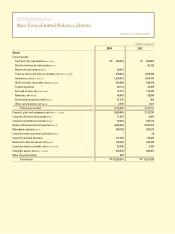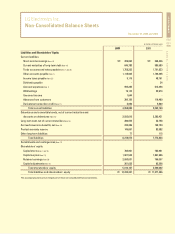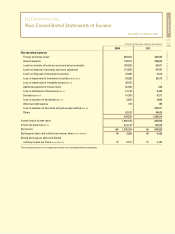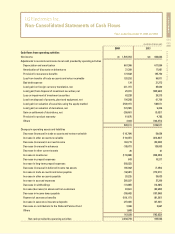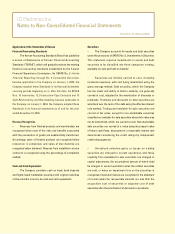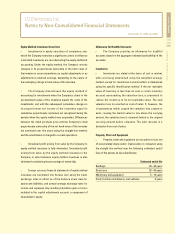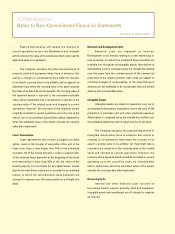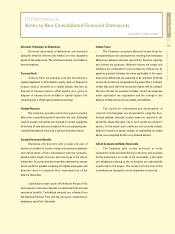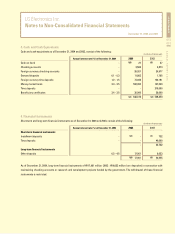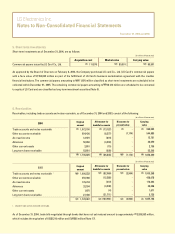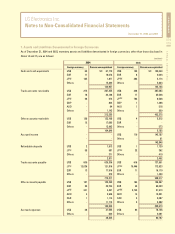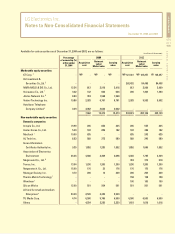LG 2004 Annual Report Download - page 69
Download and view the complete annual report
Please find page 69 of the 2004 LG annual report below. You can navigate through the pages in the report by either clicking on the pages listed below, or by using the keyword search tool below to find specific information within the annual report.
LG Electronics Inc.
Notes to Non-Consolidated Financial Statements
December 31, 2004 and 2003
LG ELECTRONICS ANNUAL REPORT 2004
068
069
Equity Method Investment Securities
Investments in equity securities of companies, over
which the Company exercises a significant control or influence
(controlled investees), are recorded using the equity method of
accounting. Under the equity method, the Company records
changes in its proportionate ownership of the book value of
the investee in current operations, as capital adjustments or as
adjustments to retained earnings, depending on the nature of
the underlying change in book value of the investee.
The Company discontinues the equity method of
accounting for investments when the Company’s share in the
accumulated losses of the investees equals the costs of the
investments, and until the subsequent cumulative changes in
its proportionate net income of the investees equal its
cumulative proportionate net losses not recognized during the
periods when the equity method was suspended. Differences
between the initial purchase price and the Company’s initial
proportionate ownership of the net book value of the investee
are amortized over five years using the straight-line method,
and the amortization is charged to current operations.
Unrealized profit arising from sales by the Company to
equity method investees is fully eliminated. Unrealized profit
arising from sales by the equity method investees to the
Company or sales between equity method investees is also
eliminated considering the percentage of ownership.
Foreign currency financial statements of equity method
investees are translated into Korean won using the basic
exchange rates in effect as of the balance sheet date for
assets and liabilities, and annual average exchange rates for
income and expenses. Any resulting translation gain or loss is
included in the capital adjustments account, a component of
shareholders’ equity.
Allowance for Doubtful Accounts
The Company provides an allowance for doubtful
accounts based on the aggregate estimatedcollectibility of the
accounts.
Inventories
Inventories are stated at the lower of cost or market,
with cost being determined using the weighted-average
method, except for inventories in-transit which is determined
using the specific identification method. If the net realizable
value of inventory is less than its cost, a contra inventory
account representing the valuation loss, is presented to
reduce the inventory to its net realizable value. The said
valuation loss is recorded as cost of sales. If, however, the
circumstances which caused the valuation loss ceased to
exist, causing the market value to rise above the carrying
amount, the valuation loss is reversed limited to the original
carrying amount before valuation. The said reversal is a
deduction from cost of sales.
Property, Plant and Equipment
Property, plant and equipment are recorded at cost, net
of accumulated depreciation. Depreciation is computed using
the straight-line method over the following estimated useful
lives of the assets, as described below.
Estimated useful life
Buildings 20 - 40 years
Structures 20 - 40 years
Machinery and equipment 5 - 10 years
Tools, furniture and fixtures, and vehicles 5 years



